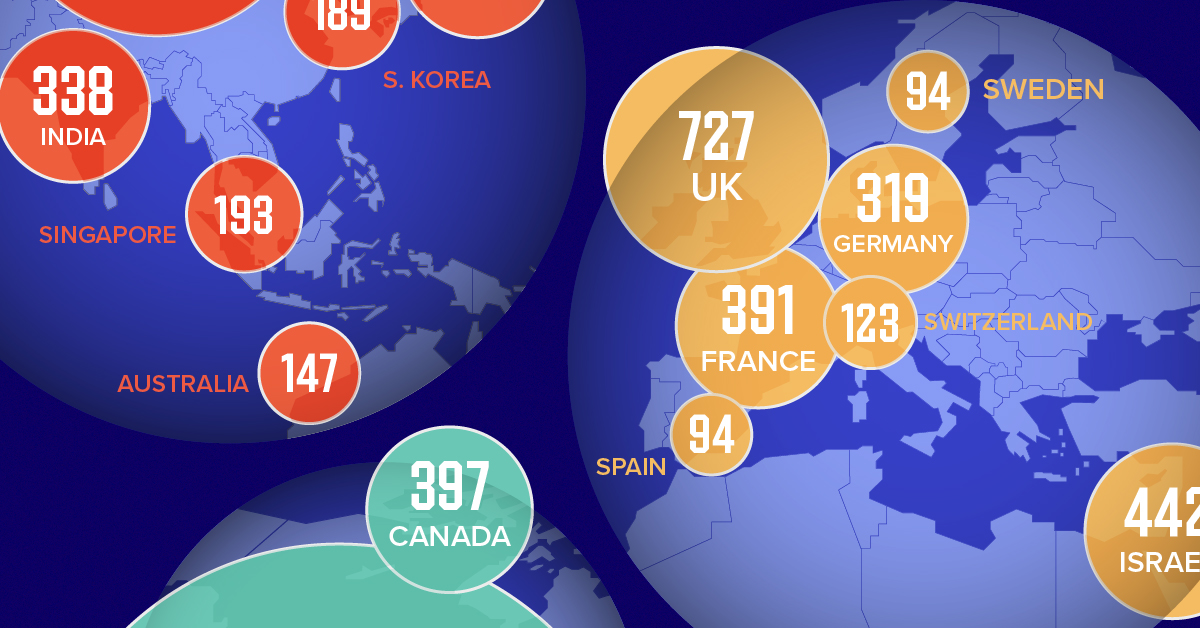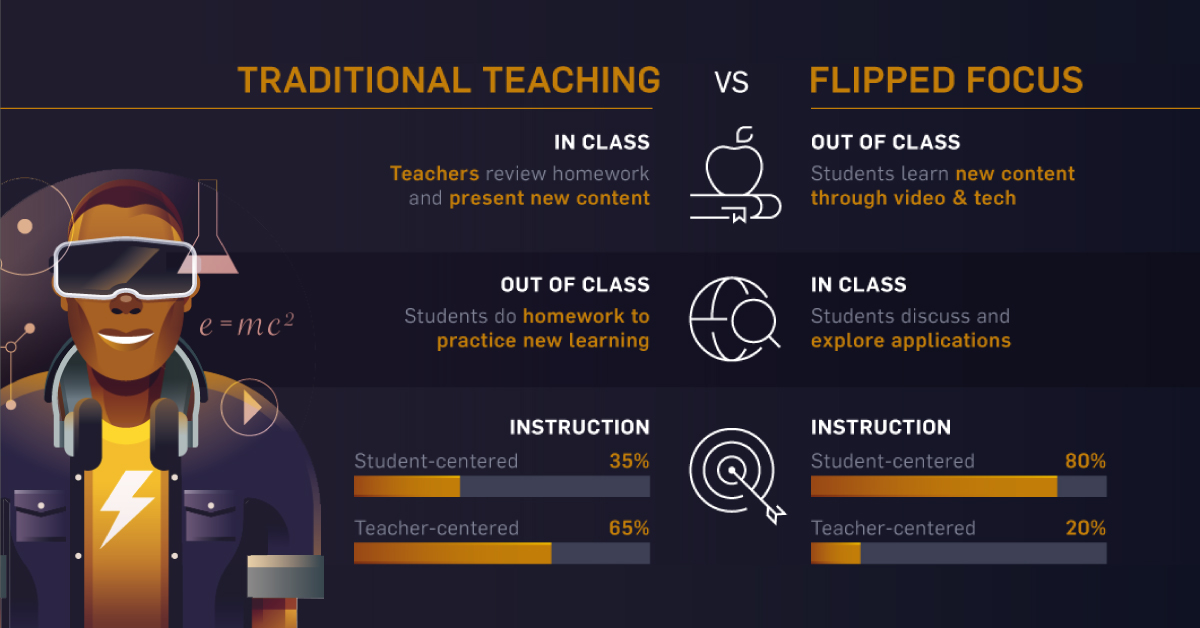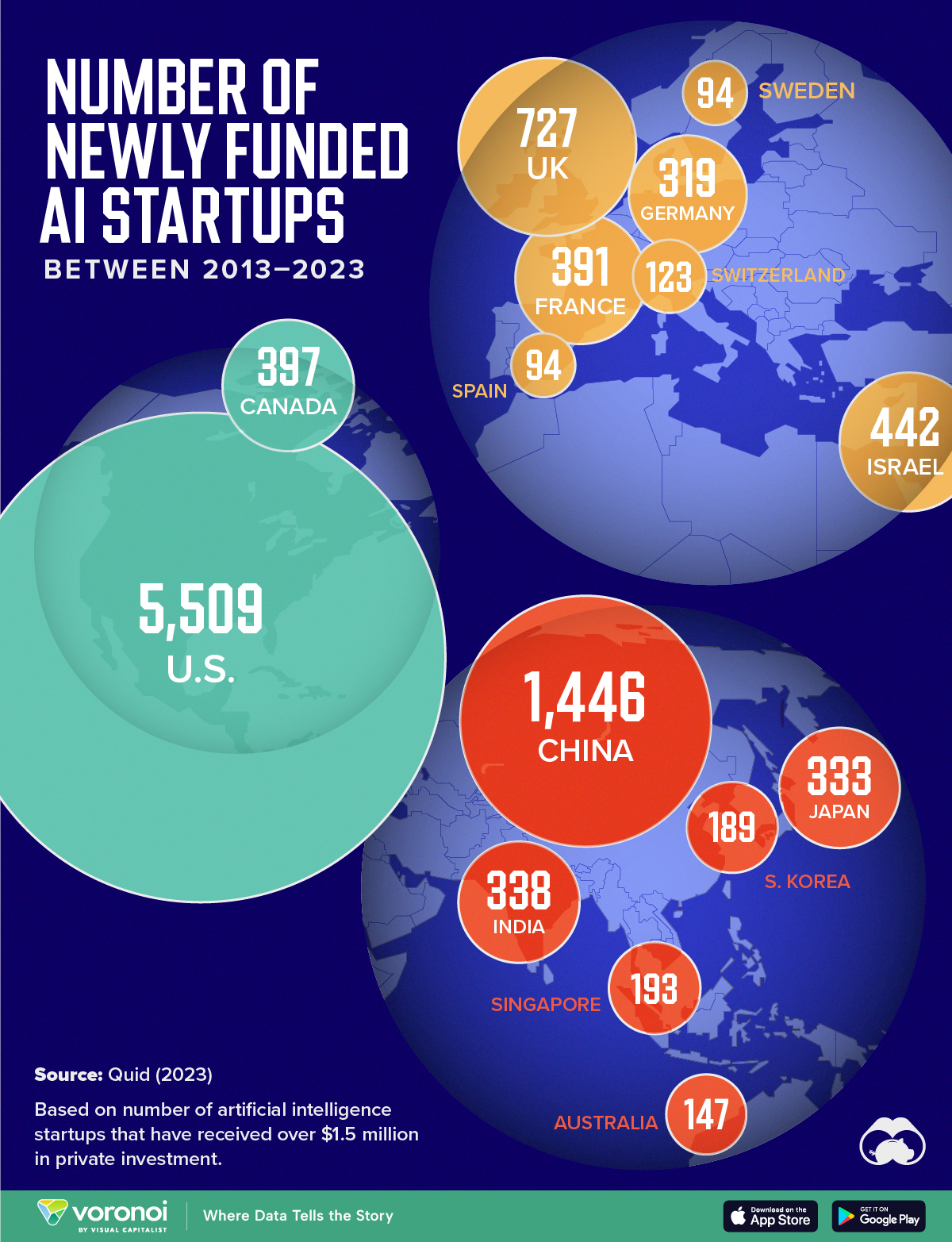Technology
How Technology is Shaping the Future of Education
Technology has transformed almost every aspect of our lives, and now it seems that education systems around the world are due for an update.
Educators are tapping into the digital revolution and adopting new technologies to help students reach their full potential, but can they adapt quickly enough to prepare children for the changing future of work?
The Growing Role of Tech in Classrooms
Today’s infographic from Best Education Degrees explores the different ways technology is transforming classrooms, and disrupting education as we know it.

The Next Generation
Although some might view technology as pervasive, for younger generations, it is ever-present.
Children and young adults make up one-third of all internet users, so it’s no surprise that they are more hyper-connected and digitally savvy than their parents.
The combination of evolving educational needs for children and a more uncertain future of work means that updating what children learn, and how they learn it, has become a crucial issue for schools and colleges—but what should be prioritized?
Classrooms 2.0
In a survey of 1,400 educators, the majority of them say they believe that classrooms of the future will be centered around self-paced and personalized learning.
This student-centric approach would allow children to choose their own pace and learning objectives based on individual interests—all of which could be guided by artificial intelligence, chatbots, and video-based learning.
Artificial Intelligence
Artificial intelligence in education typically focuses on identifying what a student does or doesn’t know, and then subsequently developing a personalized curricula for each student.
The AI-powered language learning platform Duolingo is one of the most downloaded education apps globally, with more than 50 million installs in 2018. The platform single-handedly challenges the notion of traditional learning, with a study showing that spending just 34 hours on the app equates to an entire university semester of language education.
AI-driven applications in education are still in their infancy, but Duolingo’s success demonstrates the growth potential in the sector. In fact, the nascent market for AI in education is expected to reach $6 billion by the year 2025. Over half of this will come from China and the U.S., with China leading globally.
Chatbots
Chatbots are also quickly becoming a fundamental tool in next generation education. Designed to simplify the interaction between student and computer, chatbots provide a wide range of benefits, including:
- Spaced interval learning: Uses algorithms and repetition to optimize memorization
- Immediate feedback: Papers can be graded with 92% accuracy and in a faster time than teachers
- Self-paced learning: Tracks a student’s performance and guides them based on their individual needs
This innovative technology is arming educators with new strategies for more engaged learning, whilst simultaneously reducing their workload.
Video Learning
Although video-based learning may not necessarily be considered as innovative as artificial intelligence or chatbots, 98% of educators view it as a vital component in personalized learning experiences. Most institutions report incorporating video into their curriculums in some way, but even higher demand for video-based learning may come from students in the near future.
This is due to the fact that video learning increases student satisfaction by 91%, and student achievements by 82%, which could be why educators are increasingly using video for tasks like:
- Providing material for student assignments
- Giving feedback on assignments
- Flipped instruction (blended learning) exercises
A flipped classroom overturns conventional learning by focusing on practical content that is delivered online and often outside the classroom.
The Battle Between Traditional and Tech
Flipping classrooms is a trend that has gained momentum in recent years—and may be considered to be a radical change in how students absorb information. The relatively new model also eliminates homework, by empowering students to work collaboratively on their tasks during class time.
Although new models of learning are disrupting the status quo of traditional learning, could the increasing amount of time children spend in front of screens be detrimental?
Research has shown that children are more likely to absorb information from books rather than screens. There has also been an evident increase in low-tech or tech-free schools that believe that human interaction is paramount when it comes to keeping children engaged and excited to learn.
Creating First-Class Humans
Although we may not be in the era of iTeachers just yet, the benefits of technology as teaching aids are undeniable. However, what is more important is that these aids are used in tandem with developmental and educational psychology—ultimately keeping students rather than technology at the core of education.
The future will be about pairing the artificial intelligence of computers with the cognitive, social and emotional capabilities of humans, so that we educate first-class humans, not second-class robots”
—OECD, Trends Shaping Education report
After all, how children develop these skills is perhaps less important than their ability to navigate change, as that is the only thing that will remain constant.
Digital Transformation
Mapped: The Number of AI Startups By Country
Over the past decade, thousands of AI startups have been funded worldwide. See which countries are leading the charge in this map graphic.

Mapped: The Number of AI Startups By Country
This was originally posted on our Voronoi app. Download the app for free on iOS or Android and discover incredible data-driven charts from a variety of trusted sources.
Amidst the recent expansion of artificial intelligence (AI), we’ve visualized data from Quid (accessed via Stanford’s 2024 AI Index Report) to highlight the top 15 countries which have seen the most AI startup activity over the past decade.
The figures in this graphic represent the number of newly funded AI startups within that country, in the time period of 2013 to 2023. Only companies that received over $1.5 million in private investment were considered.
Data and Highlights
The following table lists all of the numbers featured in the above graphic.
| Rank | Geographic area | Number of newly funded AI startups (2013-2023) |
|---|---|---|
| 1 | 🇺🇸 United States | 5,509 |
| 2 | 🇨🇳 China | 1,446 |
| 3 | 🇬🇧 United Kingdom | 727 |
| 4 | 🇮🇱 Israel | 442 |
| 5 | 🇨🇦 Canada | 397 |
| 6 | 🇫🇷 France | 391 |
| 7 | 🇮🇳 India | 338 |
| 8 | 🇯🇵 Japan | 333 |
| 9 | 🇩🇪 Germany | 319 |
| 10 | 🇸🇬 Singapore | 193 |
| 11 | 🇰🇷 South Korea | 189 |
| 12 | 🇦🇺 Australia | 147 |
| 13 | 🇨🇭 Switzerland | 123 |
| 14 | 🇸🇪 Sweden | 94 |
| 15 | 🇪🇸 Spain | 94 |
From this data, we can see that the U.S., China, and UK have established themselves as major hotbeds for AI innovation.
In terms of funding, the U.S. is massively ahead, with private AI investment totaling $335 billion between 2013 to 2023. AI startups in China raised $104 billion over the same timeframe, while those in the UK raised $22 billion.
Further analysis reveals that the U.S. is widening this gap even more. In 2023, for example, private investment in the U.S. grew by 22% from 2022 levels. Meanwhile, investment fell in China (-44%) and the UK (-14.1%) over the same time span.
Where is All This Money Flowing To?
Quid also breaks down total private AI investment by focus area, providing insight into which sectors are receiving the most funding.
| Focus Area | Global Investment in 2023 (USD billions) |
|---|---|
| 🤖 AI infrastructure, research, and governance | $18.3 |
| 🗣️ Natural language processing | $8.1 |
| 📊 Data management | $5.5 |
| ⚕️ Healthcare | $4.2 |
| 🚗 Autonomous vehicles | $2.7 |
| 💰 Fintech | $2.1 |
| ⚛️ Quantum computing | $2.0 |
| 🔌 Semiconductor | $1.7 |
| ⚡ Energy, oil, and gas | $1.5 |
| 🎨 Creative content | $1.3 |
| 📚 Education | $1.2 |
| 📈 Marketing | $1.1 |
| 🛸 Drones | $1.0 |
| 🔒 Cybersecurity | $0.9 |
| 🏭 Manufacturing | $0.9 |
| 🛒 Retail | $0.7 |
| 🕶️ AR/VR | $0.7 |
| 🛡️ Insurtech | $0.6 |
| 🎬 Entertainment | $0.5 |
| 💼 VC | $0.5 |
| 🌾 Agritech | $0.5 |
| ⚖️ Legal tech | $0.4 |
| 👤 Facial recognition | $0.3 |
| 🌐 Geospatial | $0.2 |
| 💪 Fitness and wellness | $0.2 |
Attracting the most money is AI infrastructure, research, and governance, which refers to startups that are building AI applications (like OpenAI’s ChatGPT).
The second biggest focus area is natural language processing (NLP), which is a type of AI that enables computers to understand and interpret human language. This technology has numerous use cases for businesses, particularly in financial services, where NLP can power customer support chatbots and automated wealth advisors.
With $8 billion invested into NLP-focused startups during 2023, investors appear keenly aware of this technology’s transformative potential.
Learn More About AI From Visual Capitalist
If you enjoyed this graphic, be sure to check out Visualizing AI Patents by Country.
-

 Energy6 days ago
Energy6 days agoMapped: The Age of Energy Projects in Interconnection Queues, by State
-

 AI2 weeks ago
AI2 weeks agoVisualizing AI Patents by Country
-

 Markets2 weeks ago
Markets2 weeks agoEconomic Growth Forecasts for G7 and BRICS Countries in 2024
-

 Wealth2 weeks ago
Wealth2 weeks agoCharted: Which City Has the Most Billionaires in 2024?
-

 Technology2 weeks ago
Technology2 weeks agoAll of the Grants Given by the U.S. CHIPS Act
-

 Green1 week ago
Green1 week agoThe Carbon Footprint of Major Travel Methods
-

 United States1 week ago
United States1 week agoVisualizing the Most Common Pets in the U.S.
-

 Culture1 week ago
Culture1 week agoThe World’s Top Media Franchises by All-Time Revenue













